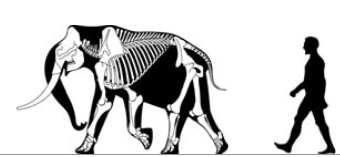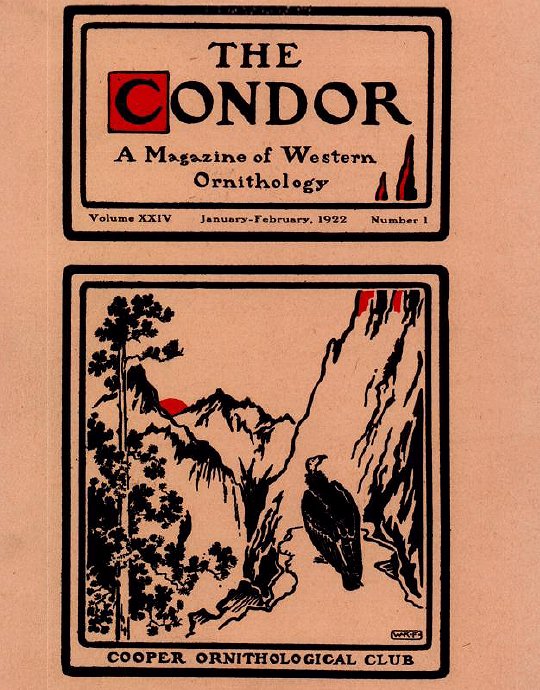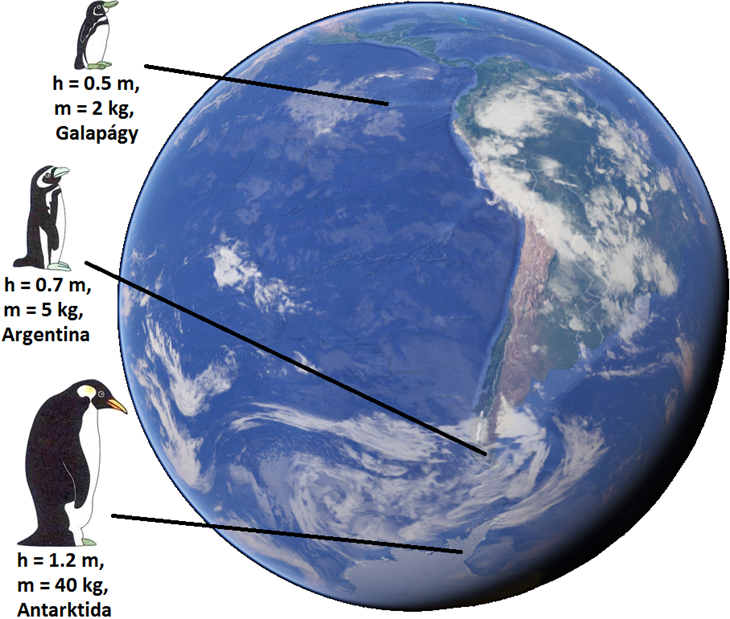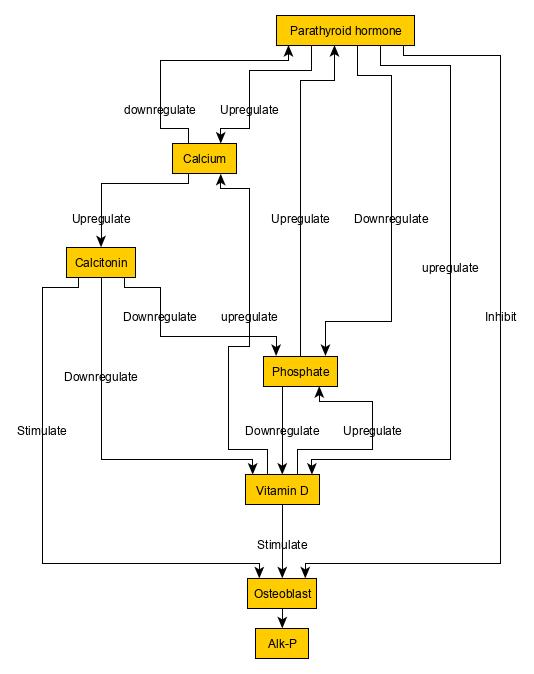|
Gloger's Rule
Gloger's rule is an ecogeographical rule which states that within a species of endotherms, more heavily pigmented forms tend to be found in more humid environments, e.g. near the equator. It was named after the zoologist Constantin Wilhelm Lambert Gloger, who first remarked upon this phenomenon in 1833 in a review of covariation of climate and avian plumage color. Erwin Stresemann later noted that the idea had been expressed even earlier by Peter Simon Pallas in ''Zoographia Rosso-Asiatica'' (1811). Gloger found that birds in more humid habitats tended to be darker than their relatives from regions with higher aridity. Over 90% of 52 North American bird species studies conform to this rule. One explanation of Gloger's rule in the case of birds appears to be the increased resistance of dark feathers to feather- or hair-degrading bacteria such as '' Bacillus licheniformis''. Feathers in humid environments have a greater bacterial load, and humid environments are more suitable for ... [...More Info...] [...Related Items...] OR: [Wikipedia] [Google] [Baidu] |
Ecogeographical Rule
A biological rule or biological law is a generalized law, principle, or rule of thumb formulated to describe patterns observed in living organisms. Biological rules and laws are often developed as succinct, broadly applicable ways to explain complex phenomena or salient observations about the ecology and biogeographical distributions of plant and animal species around the world, though they have been proposed for or extended to all types of organisms. Many of these regularities of ecology and biogeography are named after the biologists who first described them. From the birth of their science, biologists have sought to explain apparent regularities in observational data. In his biology, Aristotle inferred rules governing differences between live-bearing tetrapods (in modern terms, terrestrial placental mammals). Among his rules were that brood size decreases with adult body mass, while lifespan increases with gestation period and with body mass, and fecundity decreases wit ... [...More Info...] [...Related Items...] OR: [Wikipedia] [Google] [Baidu] |
Tropical
The tropics are the regions of Earth surrounding the Equator. They are defined in latitude by the Tropic of Cancer in the Northern Hemisphere at N and the Tropic of Capricorn in the Southern Hemisphere at S. The tropics are also referred to as the tropical zone and the torrid zone (see geographical zone). In terms of climate, the tropics receive sunlight that is more direct than the rest of Earth and are generally hotter and wetter as they aren't affected as much by the solar seasons. The word "tropical" sometimes refers to this sort of climate in the zone rather than to the geographical zone itself. The tropical zone includes deserts and snow-capped mountains, which are not tropical in the climatic sense. The tropics are distinguished from the other climatic and biomatic regions of Earth, which are the middle latitudes and the polar regions on either side of the equatorial zone. The tropics constitute 40% of Earth's surface area and contain 36% of Earth's landmass. , t ... [...More Info...] [...Related Items...] OR: [Wikipedia] [Google] [Baidu] |
Harvard University Press
Harvard University Press (HUP) is a publishing house established on January 13, 1913, as a division of Harvard University, and focused on academic publishing. It is a member of the Association of American University Presses. After the retirement of William P. Sisler in 2017, the university appointed as Director George Andreou. The press maintains offices in Cambridge, Massachusetts near Harvard Square, and in London, England. The press co-founded the distributor TriLiteral LLC with MIT Press and Yale University Press. TriLiteral was sold to LSC Communications in 2018. Notable authors published by HUP include Eudora Welty, Walter Benjamin, E. O. Wilson, John Rawls, Emily Dickinson, Stephen Jay Gould, Helen Vendler, Carol Gilligan, Amartya Sen, David Blight, Martha Nussbaum, and Thomas Piketty. The Display Room in Harvard Square, dedicated to selling HUP publications, closed on June 17, 2009. Related publishers, imprints, and series HUP owns the Belknap Press imp ... [...More Info...] [...Related Items...] OR: [Wikipedia] [Google] [Baidu] |
August Schulz
August is the eighth month of the year in the Julian and Gregorian calendars, and the fifth of seven months to have a length of 31 days. Its zodiac sign is Leo and was originally named ''Sextilis'' in Latin because it was the 6th month in the original ten-month Roman calendar under Romulus in 753 BC, with March being the first month of the year. About 700 BC, it became the eighth month when January and February were added to the year before March by King Numa Pompilius, who also gave it 29 days. Julius Caesar added two days when he created the Julian calendar in 46 BC (708 AUC), giving it its modern length of 31 days. In 8 BC, it was renamed in honor of Emperor Augustus. According to a Senatus consultum quoted by Macrobius, he chose this month because it was the time of several of his great triumphs, including the conquest of Egypt. Commonly repeated lore has it that August has 31 days because Augustus wanted his month to match the length of Julius Caesar's July, ... [...More Info...] [...Related Items...] OR: [Wikipedia] [Google] [Baidu] |
Prentice Hall
Prentice Hall was an American major educational publisher owned by Savvas Learning Company. Prentice Hall publishes print and digital content for the 6–12 and higher-education market, and distributes its technical titles through the Safari Books Online e-reference service. History On October 13, 1913, law professor Charles Gerstenberg and his student Richard Ettinger founded Prentice Hall. Gerstenberg and Ettinger took their mothers' maiden names, Prentice and Hall, to name their new company. Prentice Hall became known as a publisher of trade books by authors such as Norman Vincent Peale; elementary, secondary, and college textbooks; loose-leaf information services; and professional books. Prentice Hall acquired the training provider Deltak in 1979. Prentice Hall was acquired by Gulf+Western in 1984, and became part of that company's publishing division Simon & Schuster. S&S sold several Prentice Hall subsidiaries: Deltak and Resource Systems were sold to National Educatio ... [...More Info...] [...Related Items...] OR: [Wikipedia] [Google] [Baidu] |
The Condor (journal)
''Ornithological Applications'', formerly ''The Condor'' and ''The Condor: Ornithological Applications'', is a peer-reviewed quarterly scientific journal covering ornithology. It is an official journal of the American Ornithological Society. History The journal was first published in 1899 as the ''Bulletin of the Cooper Ornithological Club'' by a group of biologists in California. The journal's scope was regional, covering the western United States. In 1900, the name was changed to ''The Condor''. In 1947, the journal's subtitle was shortened to ''The Condor, Journal of the Cooper Ornithological Club''. Editors-in-Chief: 1899-1902: Chester Barlow; 1902-1905: Walter K. Fisher with Joseph Grinnell as Associate Editor; 1906-1939 Joseph Grinnell; 1940-1966: Alden H. Miller Berkeley, CA; 1966-1968: James R. King Washington State; 1969-1973: Ralph J. Raitt New Mexico State University; 1973-1974: Francis S. L. Williamson SI Chesapeake Bay Center for Environmental Studies, Edgewater ... [...More Info...] [...Related Items...] OR: [Wikipedia] [Google] [Baidu] |
Bergmann's Rule
Bergmann's rule is an ecogeographical rule that states that within a broadly distributed taxonomic clade, populations and species of larger size are found in colder environments, while populations and species of smaller size are found in warmer regions. Bergmann's rule only describes the overall size of the animals, but does not include body parts like Allen's rule does. Although originally formulated in relation to species within a genus, it has often been recast in relation to populations within a species. It is also often cast in relation to latitude. It is possible that the rule also applies to some plants, such as ''Rapicactus''. The rule is named after nineteenth century German biologist Carl Bergmann, who described the pattern in 1847, although he was not the first to notice it. Bergmann's rule is most often applied to mammals and birds which are endotherms, but some researchers have also found evidence for the rule in studies of ectothermic species, such as the ant '' ... [...More Info...] [...Related Items...] OR: [Wikipedia] [Google] [Baidu] |
Allen's Rule
Allen's rule is an ecogeographical rule formulated by Joel Asaph Allen in 1877, broadly stating that animals adapted to cold climates have thicker limbs and bodily appendages than animals adapted to warm climates. More specifically, it states that the body surface-area-to-volume ratio for homeothermic animals varies with the average temperature of the habitat to which they are adapted (i.e. the ratio is low in cold climates and high in hot climates). Explanation Allen's rule predicts that endothermic animals with the same body volume should have different surface areas that will either aid or impede their heat dissipation. Because animals living in cold climates need to conserve as much heat as possible, Allen's rule predicts that they should have evolved comparatively low surface area-to-volume ratios to minimize the surface area by which they dissipate heat, allowing them to retain more heat. For animals living in warm climates, Allen's rule predicts the opposite: that they s ... [...More Info...] [...Related Items...] OR: [Wikipedia] [Google] [Baidu] |
Tibetan Plateau
The Tibetan Plateau (, also known as the Qinghai–Tibet Plateau or the Qing–Zang Plateau () or as the Himalayan Plateau in India, is a vast elevated plateau located at the intersection of Central, South and East Asia covering most of the Tibet Autonomous Region, most of Qinghai, western half of Sichuan, Southern Gansu provinces in Western China, southern Xinjiang, Bhutan, the Indian regions of Ladakh and Lahaul and Spiti (Himachal Pradesh) as well as Gilgit-Baltistan in Pakistan, northwestern Nepal, eastern Tajikistan and southern Kyrgyzstan. It stretches approximately north to south and east to west. It is the world's highest and largest plateau above sea level, with an area of (about five times the size of Metropolitan France). With an average elevation exceeding and being surrounded by imposing mountain ranges that harbor the world's two highest summits, Mount Everest and K2, the Tibetan Plateau is often referred to as "the Roof of the World". The Tibetan ... [...More Info...] [...Related Items...] OR: [Wikipedia] [Google] [Baidu] |
Inuit
Inuit (; iu, ᐃᓄᐃᑦ 'the people', singular: Inuk, , dual: Inuuk, ) are a group of culturally similar indigenous peoples inhabiting the Arctic and subarctic regions of Greenland, Labrador, Quebec, Nunavut, the Northwest Territories, and Alaska. Inuit languages are part of the Eskimo–Aleut languages, also known as Inuit-Yupik-Unangan, and also as Eskaleut. Inuit Sign Language is a critically endangered language isolate used in Nunavut. Inuit live throughout most of Northern Canada in the territory of Nunavut, Nunavik in the northern third of Quebec, Nunatsiavut and NunatuKavut in Labrador, and in various parts of the Northwest Territories, particularly around the Arctic Ocean, in the Inuvialuit Settlement Region. With the exception of NunatuKavut, these areas are known, primarily by Inuit Tapiriit Kanatami, as Inuit Nunangat. In Canada, sections 25 and 35 of the Constitution Act of 1982 classify Inuit as a distinctive group of Aboriginal Canadians wh ... [...More Info...] [...Related Items...] OR: [Wikipedia] [Google] [Baidu] |
Tibetan People
The Tibetan people (; ) are an East Asian ethnic group native to Tibet. Their current population is estimated to be around 6.7 million. In addition to the majority living in Tibet Autonomous Region of China, significant numbers of Tibetans live in the Chinese provinces of Gansu, Qinghai, Sichuan, and Yunnan, as well as in India, Nepal, and Bhutan. Tibetan languages belong to the Tibeto-Burman language group. The traditional or mythological explanation of the Tibetan people's origin is that they are the descendants of the human Pha Trelgen Changchup Sempa and rock ogress Ma Drag Sinmo. It is thought that most of the Tibeto-Burman speakers in Southwest China, including Tibetans, are direct descendants from the ancient Qiang people. Most Tibetans practice Tibetan Buddhism, although some observe the indigenous Bon religion and there is a small Muslim minority. Tibetan Buddhism influences Tibetan art, drama and architecture, while the harsh geography of Tibet has produced ... [...More Info...] [...Related Items...] OR: [Wikipedia] [Google] [Baidu] |
Osteomalacia
Osteomalacia is a disease characterized by the softening of the bones caused by impaired bone metabolism primarily due to inadequate levels of available phosphate, calcium, and vitamin D, or because of resorption of calcium. The impairment of bone metabolism causes inadequate bone mineralization. Osteomalacia in children is known as rickets, and because of this, use of the term "osteomalacia" is often restricted to the milder, adult form of the disease. Signs and symptoms can include diffuse body pains, muscle weakness, and fragility of the bones. In addition to low systemic levels of circulating mineral ions (for example, caused by vitamin D deficiency or renal phosphate wasting) that result in decreased bone and tooth mineralization, accumulation of mineralization-inhibiting proteins and peptides (such as osteopontin and ASARM peptides), and small inhibitory molecules (such as pyrophosphate), can occur in the extracellular matrix of bones and teeth, contributing locally to cause ... [...More Info...] [...Related Items...] OR: [Wikipedia] [Google] [Baidu] |









